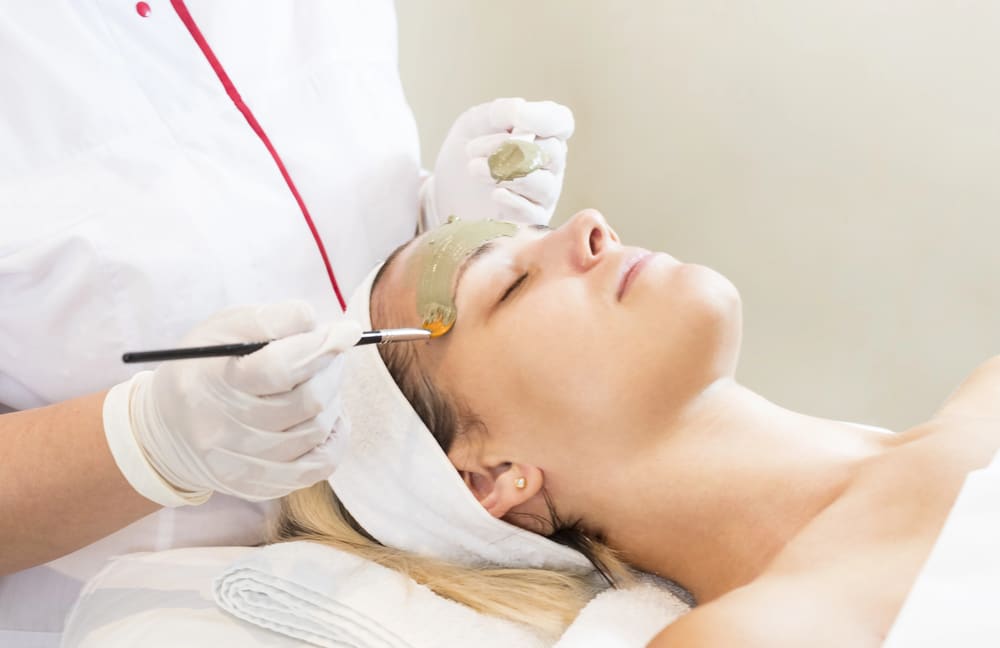Article At A Glance
- Different types of peels, including light, medium, and deep chemical peels, target specific skin issues.
- The effectiveness of chemical peels lies in their ability to remove damaged skin cells and promote collagen production.
- The benefits of chemical peels include reduction of fine lines and wrinkles, treat acne and scars, and enhance skin texture and tone.
- After a peel, the skin may experience redness, swelling, or flaking during the healing process.

Chemical peels have become highly popular for improving skin health and appearance. They effectively address acne scars, uneven skin tone, and fine lines. Many individuals have experienced a noticeable transformation in their skin’s texture and radiance. This blog post will explore the benefits of this popular cosmetic treatment and why it might be the right choice for you.
Understanding Chemical Peels
A chemical peel is a non-invasive treatment that uses chemical solutions to exfoliate the skin. Applying these solutions to the skin’s outermost or superficial layer slows away dead skin cells, revealing a fresh and rejuvenated complexion underneath. Various types of peels, including light, medium, and deep chemical peels, are each designed to target different skin concerns.
Types of Chemical Peels
- Superficial Peels: These use mild acids like alpha hydroxy acid (AHA) to gently exfoliate the outer layer of skin, making them ideal for improving texture and tone. Superficial peels are recommended for mild skin issues like dryness or minor pigmentation.
- Medium Peels: Using trichloroacetic acid (TCA), these penetrate deeper to address age spots, fine lines, and moderate wrinkles. Recovery takes longer than superficial peels, but results can be more pronounced. Patients may experience redness and peeling for a few days, but the result is worth it.
- Deep Peels: These treatments use phenol or strong acids to penetrate deep skin layers and are suitable for severe issues like scars or precancerous growth. Deep peels need more downtime and are usually done under sedation, with dramatic, long-lasting improvements in skin appearance.
How Does a Chemical Peel Work?
The effectiveness of a chemical peel lies in its ability to remove damaged skin cells and promote collagen production. When the outer layer of skin is removed, the body generates new skin cells, resulting in a more youthful and vibrant appearance. As a result, your skin can look smoother, brighter, and even-toned.
The process begins with a consultation, during which your skincare professional evaluates your skin type, concerns, and goals. They will recommend the best peel for your needs. During treatment, a chemical solution is applied to the skin, left for a set time, then neutralized and removed. The sensation varies with the peel’s strength, from mild tingling to intense burning.
After the peel, the skin will heal, during which it may appear red, swollen, or flaky. This is completely normal and is part of the skin’s rejuvenation process. Over the following days, as the dead skin cells shed, you will begin to see the fresh, revitalized skin underneath.
Benefits of Chemical Peels
Reduction of Fine Lines and Wrinkles
One of the most significant benefits of chemical peels is their ability to reduce the appearance of fine lines and deep wrinkles. As we age, our skin naturally loses elasticity and collagen, leading to wrinkles and sagging. By encouraging collagen growth, chemical peels can help restore a youthful appearance and diminish signs of premature aging.
Chemical peels can stimulate the production of new collagen, resulting in firmer and more resilient skin. Many patients report their skin feeling smoother and appearing more youthful following treatment. Regular sessions can further enhance these results, making them popular for individuals looking to maintain a youthful look.
Treatment of Acne and Scars
For those struggling with acne or acne scars, chemical peels can be a game-changer. They effectively clear out clogged pores, reducing breakouts and preventing future occurrences. Moreover, by exfoliating the skin, chemical peels help improve the skin’s texture, minimizing the appearance of deep scars and promoting a clearer complexion.
Salicylic acid peels, a popular choice for acne treatment, can penetrate the pores and dissolve the excess oil that contributes to breakouts. This makes them especially beneficial for acne-prone skin. Many patients see a significant reduction in the appearance of dark spots left behind by acne, improving skin clarity.
Enhanced Skin Texture and Tone
Another compelling benefit of chemical peels is their ability to enhance skin texture and tone. Chemical peels can address uneven skin tone, dark spots, and other imperfections by removing dead skin cells and promoting new cell growth. Dealing with sun exposure damage or age spots, a chemical peel can significantly improve your skin’s overall appearance, giving it a healthier glow.
Medium peels can also help to reduce the appearance of uneven skin texture caused by sun damage or scarring. The result is a more uniform complexion that appears radiant and refreshed. Many patients find their skin looks brighter and feels softer after one treatment, but multiple sessions can lead to even more pronounced results.
Boosting Skincare Product Effectiveness
After a chemical peel, your skin becomes more receptive to skincare products. Removing the outermost layer allows products to penetrate deeper and work more effectively. This means that the serums, moisturizers, and treatments you apply post-peel will deliver better results, helping you achieve your skincare goals faster. Regular peels can enhance your skincare routine, allowing you to maximize the benefits of your favorite products.
For instance, if you’ve been using products with active ingredients like retinoids or vitamin C, you’ll notice that they absorb better and yield more significant results after a peel. Patients often report that their skin feels more hydrated and looks healthier, leading to an overall improvement in their skincare experience.
What to Expect After a Chemical Peel
Understanding what to expect after a chemical peel can help you prepare for the healing process. Depending on the peel’s depth, the immediate aftermath may involve redness, swelling, and peeling, lasting from a few days to a few weeks.
Aftercare Tips
- Sun Protection: It is crucial to protect your skin from sun exposure during the healing process. Use a broad-spectrum sunscreen with an SPF of 30 or higher and wear protective clothing.
- Moisturization: Keep your skin moisturized to help soothe any dryness or irritation. Look for gentle, hydrating products that won’t irritate your sensitive skin.
- Avoid Harsh Products: Avoid exfoliating scrubs, retinoids, and other harsh products for at least a week after your peel.
- Stay Hydrated: Drink plenty of water to keep your skin hydrated from the inside out.
Start Your Chemical Peel Journey Today
If you’re ready to experience the rejuvenating effects of chemical peels, now is the time to take action. Book your first consultation with Dr. James Wang to start achieving the results you desire. Call our clinic today at (312) 695-8182 to schedule your appointment and learn more about the chemical peel procedures available. You can enjoy smoother, clearer, and more youthful-looking skin with the right treatment.
